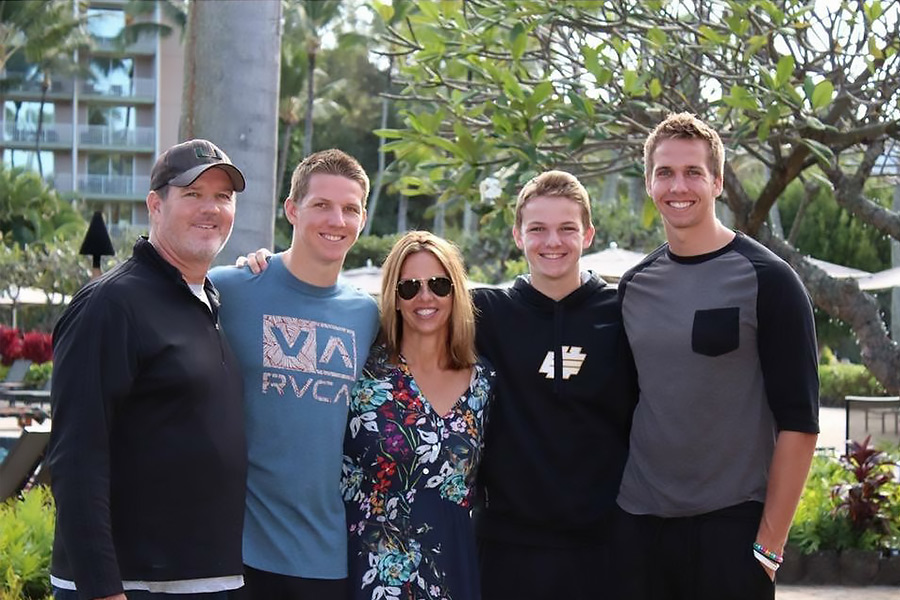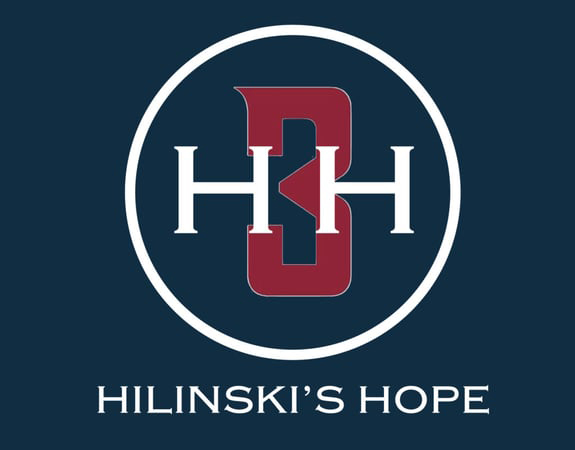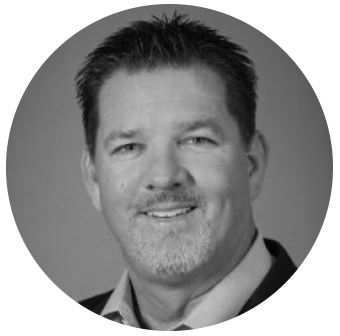o one ever plans to start a charitable foundation in memory and honor of their 21-year-old son.
I never did.
But on January 16, 2018, my middle son Tyler died by suicide.
My whole world shattered, and it will never be the same. Tyler was amazing. This is not just simple "proud Dad" talk. To those lucky enough to have known him a little or a lot, all agree he was just "awesome," his own favorite adjective. You won’t find many who are more kind or sweet or self-aware than Tyler was at his age. But with the world at his feet and his dreams directly in front of him, he got sick.
I didn’t want to believe those I heard from who suffered a loss by suicide before us. After Tyler passed away, the people I met who were already members of this most unwanted club steadily told me it would never get better. Time, they said, was not an ally in this process of grieving. I would either learn to live with my despair, or it would consume me and grind an already broken heart into dust.
Sadly, they all had been right.
As I tell Tyler’s story, I try to tell people who gaze back at me with that knowingly sad stare, “I wish you had known Tyler so you’d understand that this isn’t an exaggeration.”
Tyler was special, kind and all the adjectives and adverbs used to describe him by his peers, teammates, family and friends. It isn’t hyperbole. He was awesome.
Nothing could have prepared me for this life-changing event. Tyler’s brothers, his extended family and especially my wife and I not only didn’t see him struggle, we also didn’t believe the call we received that terrible day.
“Mr. Hilinski, this is Coach Huff from Washington State University. I’m sorry, but Tyler missed his 7-on-7 workout practice that he scheduled on his own today after lifting and running in the morning. He’s not answering his phone and his teammates are driving around Pullman looking for his car. Have you heard from him?”
“Really? That doesn’t sound like Tyler at all.”
“Okay, we are sending the Pullman Police Department to do a wellness check, and we have to file a missing person’s report.”
“WAIT! What?”
“Hold on, we’ll find him. Let me call his brothers and friends.”
I hung up, promising to call back when I found him.
It’s hard to describe the fear and the panicked pounding of my heart with that one call. I looked at my wife Kym on the stairs. “Go. Find him, Mark!” she said.
Tyler, missing? There had to be an easy explanation. He ran out of gas, got his car stuck in a ditch (he wasn’t a great driver), his phone was out of battery power (it happened a lot), he overslept. Something. Anything. I needed to hear his voice. Now.
But I never would again.
After 30 minutes of frantic, unanswered calls, I raced to the airport.
“Dad”
That was the text message I got from my oldest son Kelly as I raced through security at John Wayne Airport in Santa Ana, California.
Somehow, with that one word on the screen, I knew he was gone. My mind seized as I froze, looking at travelers laughing and walking past. Life was not stopping. Life outside never stops for tragedy. It was my worst nightmare and yet no one else knew at that moment that our lives had just changed forever.
I crumpled to my knees on the floor of the airport. What happened? It didn’t make any sense. It still doesn’t.
It would be hours before I understood how my son, my wonderful and kind and beautiful boy, died 1,700 miles away from me. Not in a car accident, not by homicide and not by accident.
Suicide. Gone. Forever.
I would later learn that access to an irresponsibly stored and unlocked AR-15 and ammunition were all he needed. Just the final desperate act to end a mind in inescapable pain remained. A few clicks on YouTube on how to load and operate it. A few more on how to make sure he had it positioned correctly to complete this unimaginable last task without harming others, three unsuccessful tries at loading it and, later, one pull of the trigger and he was gone.
I couldn’t fix this one. No one could. There would be no more Facetime chats, no more calls or texts, no more games to cheer him on or to talk about with the son that made my life complete. No more movies to laugh about, no new pictures to take of the smile always plastered on his face. I was married to the love of my life, surrounded by the best sons a Dad could ever dream of having, but my almost perfect life was shattered. It still is.
I called Kelly. I begged and pleaded with him to tell me he was wrong, that maybe he wasn’t certain, any glimpse of hope from the hell we had just entered. He couldn’t. We had no idea what had gone so wrong. His teammates busted down his apartment door before the police arrived and found him. Dead.
My youngest son Ryan texted me, “Dad, where are you? Please come home, please.”
When I arrived home, Kym was on the upstairs bathroom floor inconsolable, Ryan holding her. My 17-year-old son, wrapped around his mother trying to help her breathe. Strong and struggling to make sense of what was happening to his world, his mind clouded by what had happened to his brother. We held on to each other, slowly slipping into our new reality as we called 911 to help Kym. Kelly, at school in Utah, alone and in pain, couldn’t get home fast enough.

Tyler Scott Haun Hilinski was 21 years old. The middle brother of our three sons, and the most amazingly beautiful person inside and out to all those who knew him and many who didn’t. He was the quarterback for Washington State University and had just started his first game at the Holiday Bowl in San Diego. His journey had really only just begun. His dreams just developing. Life and love directly ahead of him.
He didn’t say why he left and didn’t leave a note. He never asked for help nor exhibited signs of concern. He was the guy others went to with their problems. His life, I thought, seemed to resemble the life of many collegiate student athletes. Long days, new friends, exciting times full of many more ups than downs. How wrong I was.
Experts say that some of those who die by suicide feel that they are a burden to others. Some who die by suicide wrongly believe that their leaving will be better for everyone around them. That is the brain making mistakes in judgment and reasoning. Tyler had food, money in his account and love all around him. That is how mental illness or disease wrecks the decision-making process for those who suffer in silence.
Stigma is the biggest single barrier to seeking help or support. This must end.
Mental health is more complex in many ways than orthopedic health. We need to empower our young people, and their peers, administrators and coaches, with the tools to deal with this overpowering disease.
Hilinski’s Hope was started in an attempt to remember and honor Tyler and his life. To make sure that other student athletes have a better chance to deal with mental illness. Leaving should never be an option. Sadly, the statistics around suicide are heading in a decidedly upward direction and have been since 1999.
The young men and women playing high school and collegiate sports for our enjoyment and entertainment do much more than is readily recognized. They also deal with the deadly stigma surrounding mental illness while navigating their young lives around a myriad of landmines better known as “growing up.”
They need your help. I need your help and prayers. And we all need your promise to never forget Tyler.

The Hilinski’s Hope Foundation is a non-profit organization founded in 2018 by Tyler Hilinski’s family. The Foundation’s mission is to educate, advocate and remove the stigma associated with mental illness. Funding generated supports programs that help destigmatize mental illness and provide student-athletes with tools and resources that support their mental health and wellness.
Hilinski’s Hope currently partners with the NCAA and programs such as Step Up!, a comprehensive bystander intervention program created by the University of Arizona in partnership with the NCAA and Behind Happy Faces, a program that uses cutting edge educational videos and lesson plans to enhance the emotional development of young people. Kym and Mark Hilinski also travel to various universities and colleges to educate student-athletes on mental health and wellness.
Statistics:
- Suicide is the second leading cause of death for young people between the ages of 10 and 24.
- Suicide rates among people living in the United States, ages 15 to 19, increased by 47% between 2000 and 2017 and have increased by 36% in people living in the US ages 20 to 24.
National Suicide Prevention Hotline:
1-800-273-TALK (8255)
In the original published content of Finding Hope in Darkness, the team at STRIVE made an edit that incorrectly identified those who die by suicide. While unintentional, we take full responsibility for this misrepresentation, recognizing that words matter and even a single word can cause immense pain. The result of our error is deeply troubling and to the families, friends and colleagues impacted by suicide, and especially the Hilinski family, we extend our heartfelt and sincere apologies.
As leaders, we must accept responsibility for our actions, reflect and be open to learning from teachable moments to ensure that similar insensitivity does not occur in the future. As passionately noted by author Mark Hilinski in this article, “Stigma is the biggest single barrier to seeking help or support. This must end.” The members of STRIVE pledge their support of this endeavor.
The team at STRIVE is immensely grateful to the Hilinski family for sharing this intensely personal story. Their choice, in the midst of unimaginable tragedy, to move forward and help others by educating with love, compassion, understanding and hope represents the best of humanity and we are all better for their efforts.
Please visit www.Hilinskishope.org to learn more about the important work of The Hilinski’s Hope Foundation. Donations in support of Hilinski’s Hope fund programs that help educate, advocate and destigmatize mental illness.

Mark Hilinski , a former retail technology executive, is the co-founder and current board member of Hilinski’s Hope (H3H). H3H is a charitable foundation founded in 2018 to honor the life of his son, Tyler, who died by suicide on January 16, 2018. Tyler was the quarterback for the Washington State University Cougars. His death was a shock to all of those around him, as he showed no signs of distress and never asked for help. Hilinski’s Hope was founded to help other student athletes eliminate the stigma around mental illness and build awareness and programs to help care for their mental health.
Mark Hilinski , a former retail technology executive, is the co-founder and current board member of Hilinski’s Hope (H3H). H3H is a charitable foundation founded in 2018 to honor the life of his son, Tyler, who died by suicide on January 16, 2018. Tyler was the quarterback for the Washington State University Cougars. His death was a shock to all of those around him, as he showed no signs of distress and never asked for help. Hilinski’s Hope was founded to help other student athletes eliminate the stigma around mental illness and build awareness and programs to help care for their mental health.